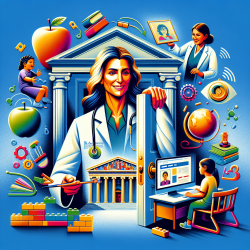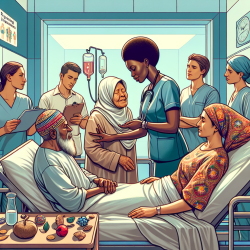Enhancing Child Outcomes Through Historical Insights and Digitization
In the world of speech-language pathology, creating successful outcomes for children is paramount. As practitioners, we constantly seek innovative methods and evidence-based practices to enhance our therapeutic approaches. A fascinating avenue to explore is the intersection of history and technology, as illustrated by Dr. Donald A.B. Lindberg's contributions to the National Library of Medicine (NLM).
Dr. Lindberg's Vision: A Blend of History and Technology
Dr. Lindberg, a visionary leader, significantly impacted the NLM's historical programs and services. His work emphasized three main areas: a focus on contemporary history, digitization of historical materials, and enhancing outreach through exhibitions. These efforts not only preserved valuable historical records but also made them accessible to a broader audience, including healthcare professionals.
Practical Applications for Speech-Language Pathologists
How can Dr. Lindberg's work be leveraged in speech-language pathology to improve child outcomes? Here are a few ways:
- Access to Historical Data: The digitization of historical materials provides a wealth of information on past medical practices and outcomes. By studying these records, practitioners can gain insights into successful interventions and adapt them to modern contexts.
- Incorporating Technology: Dr. Lindberg's emphasis on digitization highlights the importance of integrating technology into therapy. Online platforms, like those provided by TinyEYE, can be used to deliver effective therapy sessions remotely, making services more accessible to children in diverse locations.
- Learning from Exhibitions: The NLM's exhibitions offer educational resources that can be used to inform and inspire both practitioners and clients. These exhibitions can serve as a tool for developing engaging therapy materials that resonate with children.
Encouraging Further Research
Dr. Lindberg's work underscores the importance of ongoing research and education. Speech-language pathologists are encouraged to delve deeper into historical medical records and explore how past practices can inform current methodologies. By doing so, practitioners can contribute to the evolving field of speech-language pathology and enhance their therapeutic impact.
Conclusion
Dr. Lindberg's contributions to the NLM's historical programs and services offer valuable lessons for speech-language pathologists. By embracing historical insights and leveraging technology, practitioners can improve outcomes for children and advance their professional practice. To explore the original research paper, please follow this link: An active contributor: Dr. Lindberg and NLM’s historical programs and services.










